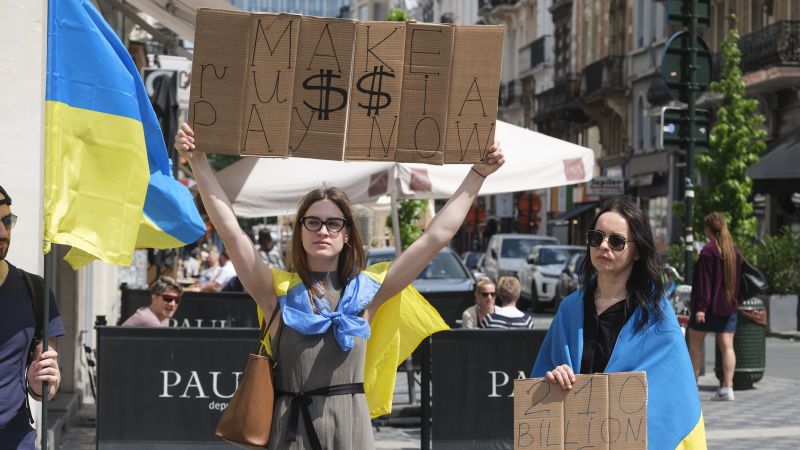The West is looking to tap into frozen Russian financial assets to provide much-needed support to Ukraine as it battles against Russian troops. Finance officials from the G7 met in Stresa, Italy to discuss ways to utilize the €260 billion of Russia’s foreign currency reserves that were frozen after the invasion of Ukraine in 2022. Progress has been made in addressing the main issues, but there are still legal and technical matters that need to be resolved. The G7 countries are in a strong political stance regarding this issue.
Given the escalation of Russia’s attacks in Ukraine, there is a growing pressure on Western leaders to provide military aid to Kyiv. One proposal that has significant backing involves lending up to $50 billion to Ukraine using future windfall profits from Russian assets held in the European Union as collateral. This move is seen as vital and urgent to provide resources to help Ukraine. The plan is expected to be finalized in a summit in Italy next month with President Joe Biden and other leaders.
Most of Russia’s immobilized assets, around €210 billion, are held in the EU, with Euroclear holding a majority of them. An agreement was adopted by the EU to utilize the windfall profits generated by these assets for the benefit of Ukraine. This would involve sending between €2.5-3 billion annually to Kyiv, with a majority earmarked for arms and military equipment. The EU also plans to review the allocation of funds annually to adjust to Ukraine’s evolving needs.
Apart from using future profits from Russian assets, another option being considered is a reparations loan. Under this approach, Ukraine would borrow money from a syndicate of allies, including G7 members, and pledge its claim for reparations against Russia as collateral. This would provide Kyiv with access to a larger amount of money to help with reconstruction efforts. The mechanism ensures that Russia, to some extent, contributes to the costs of rebuilding Ukraine.
The proposal discussed by the G7 involves providing a significant lump sum immediately to Ukraine, as opposed to the gradual funding agreed by the EU. The exact amount of the collateralized loan is still being debated, with $50 billion being a figure under consideration. Additionally, the West may also consider seizing the assets outright, although this could discourage other countries from keeping their assets in the EU.
Overall, the efforts to leverage frozen Russian assets to support Ukraine highlight the complex financial and geopolitical dynamics at play. The West is exploring various options to provide substantial financial assistance to Kyiv, balancing legal, technical, and geopolitical considerations. The outcome of these discussions will have significant implications for Ukraine’s ability to withstand Russian aggression and rebuild in the aftermath of the conflict.


